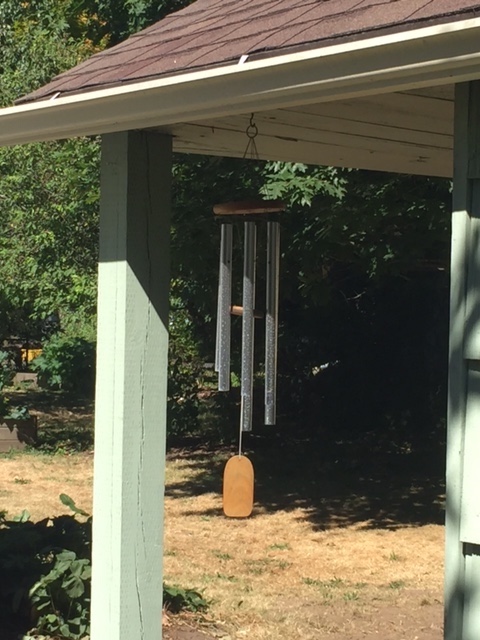 My priorities have changed significantly in the past few years, and so have my dreams. Although I’m not yet sixty, I’m starting to see the world as an elder, and my dreams have reflected this change as well. Especially in the past year, as I’ve developed symptoms of a degenerative disease that is accelerating my physical aging process (Radiation Fibrosis Syndrome), I’m truly discovering what it means to be initiated into a completely new stage in the life cycle—and it’s not what I expected. It’s much more subtle than the leap from childhood to adulthood, yet more profoundly meaningful than any of the other transformative experiences I’ve known.
My priorities have changed significantly in the past few years, and so have my dreams. Although I’m not yet sixty, I’m starting to see the world as an elder, and my dreams have reflected this change as well. Especially in the past year, as I’ve developed symptoms of a degenerative disease that is accelerating my physical aging process (Radiation Fibrosis Syndrome), I’m truly discovering what it means to be initiated into a completely new stage in the life cycle—and it’s not what I expected. It’s much more subtle than the leap from childhood to adulthood, yet more profoundly meaningful than any of the other transformative experiences I’ve known.
So many times in my life, I’ve come to the end of one phase, experienced losses, uncertainty, and “suspended animation” during a transitional period, and then begun a new phase, with new energies, new resources, and new options. But, for some reason, when I left a job I loved five years ago and entered one of those painful, liminal transitions, the “new phase” I expected never seemed to arrive.
Instead of starting over, I found that the “suspended animation” just went on and on. Somehow, I’m not getting re-animated! Unless I reframe this experience, and change my expectations, my situation and prospects could look pretty grim. Loved ones just keep dying. I face more and more physical limitations. When I tried to go “back to school,” seeking out further education and training (which had always worked before), I encountered impossible obstacles. When I started new projects, they didn’t exactly fail, but required constant attention and drained away my energies rather than rejuvenating them. And, most disturbing, many of my familiar spiritual practices and disciplines no longer seemed life-giving.
At first, all of these discouraging experiences seemed to point to depression—so I soldiered on patiently, kept trying, hanging in there, not giving up, waiting for an opening, doing my best. I tried some big things, and lots of small things, but life just kept slipping by without any significant breakthrough.
Then, I began to notice something strange about this apparent stagnation. Underneath it all, I’m at peace in a way I’ve never been before. The harder I try, the more drained and discouraged I become; yet when I stop trying so hard, I’m filled with quiet joy. I’m not so concerned with proving myself, or even with being myself—instead, I’m just being. I’ve lost most of my ambition, but it doesn’t actually worry me (except when I think “Shouldn’t you be worried about this?”). I’m paying lots of attention to the physical pleasure of doing the things I can still do, and not dwelling much on the things I can’t do. The past makes me sad, the future can make me anxious—but I’m quite interested in the present, and the present is just fine.
Even when the world situation seems catastrophic, even when there are too many losses coming too fast, even when it looks like finances or health or politics will cause everything to fall apart—I sense and trust a kind of spaciousness, and can hold that space open for others and myself. I have no idea how I’m doing it.
What is this? The “new phase” I’ve been looking for is actually already in progress. It just doesn’t work the same way that any of my previous phases have worked. I’ve always been drawn to old people, because many of them have this funny way of not getting bothered, while still caring deeply. Could this be where I’m going? Could this be who I really am?
My dreams are different, too. Like many older adults, I’m not remembering them as well. Aside from the fairly common sleep difficulties that can disrupt dreaming as we get older, I suspect the dream-recall deficit is because the work of these dreams doesn’t urgently need to be brought to my conscious attention. I’ve accumulated enough material to work on over the past fifty-six years, and I don’t need more stuff to figure out and make sense of. What I need is simple experiences of being alive and valuing life. When I remember my dreams, they just point to what’s most important right now.
I have a lot of dreams about helping or teaching others, dreams where I’m not the “hero,” but the mentor, sidekick, or teacher. I’m trying to make it easier for someone: saving a spider from the bathtub, or bringing peppermint tea to a sick girl. In many of my dreams, I’m not the central character—and often, I’m not present at all, just a disembodied observer of someone else’s story—which, ultimately, is my story, too, of course. I have dreams of returning to familiar places, finding them changed, and adapting to those changes. And then there are the sweet dreams of just appreciating something beautiful: birdwatching from the deck of a becalmed ship as sunlight glitters on the water’s surface; or approaching a lit cabin through the woods in the dark. Continue reading











